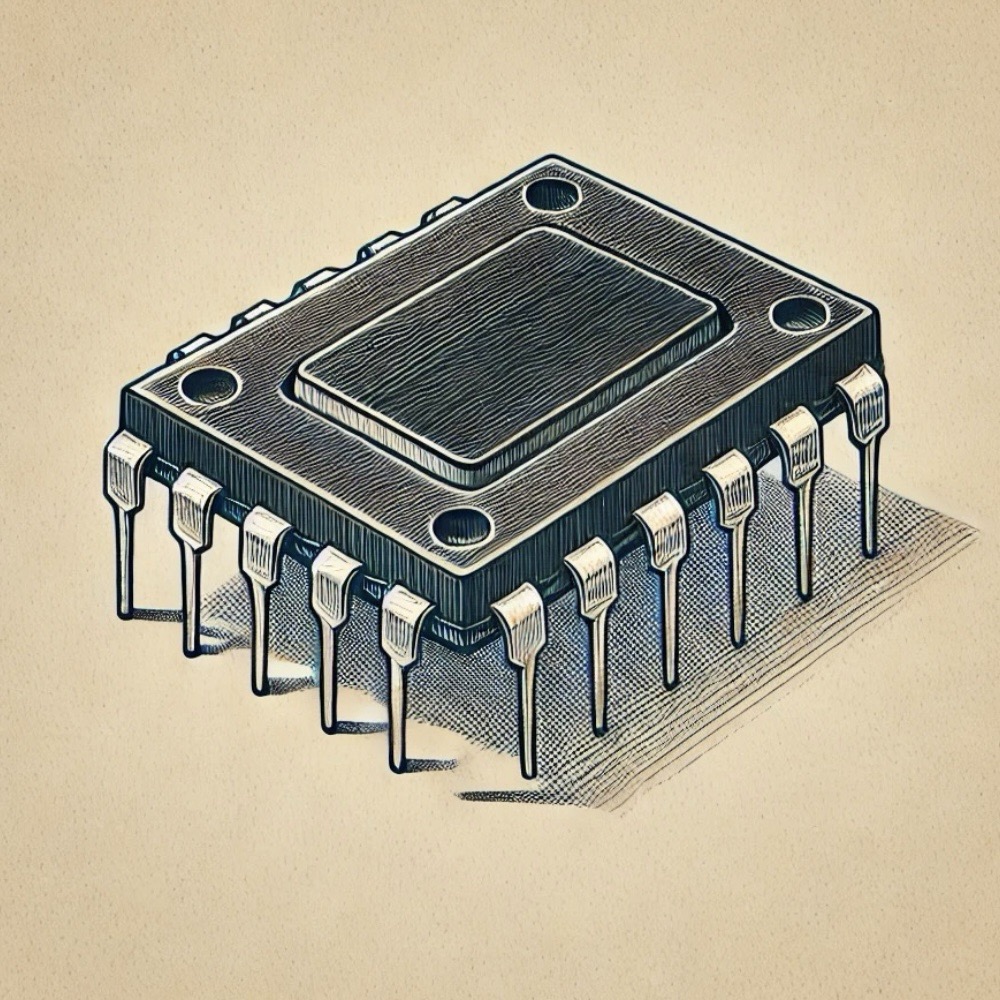Overview
The PIC18F4550 is a high-performance 8-bit microcontroller from Microchip Technology, designed to cater to applications requiring USB connectivity, robust memory, and efficient processing. With its Enhanced RISC architecture and integrated USB 2.0 support, the PIC18F4550 is ideal for modern applications in industrial control, data logging, and portable device development.
This microcontroller offers a versatile combination of hardware features, power-saving capabilities, and peripheral interfaces, making it a popular choice for engineers and hobbyists alike.
Specifications
The PIC18F4550 is packed with features that provide excellent functionality and performance. Key specifications include:
- CPU Architecture: 8-bit Enhanced RISC
- Operating Voltage: 2.0V to 5.5V
- Clock Speed: Up to 48 MHz with PLL
- Memory: 32 KB Flash, 2 KB RAM, 256 bytes EEPROM
- GPIO: 35 configurable I/O pins
- ADC: 13 channels of 10-bit analog-to-digital conversion
- PWM: Pulse Width Modulation outputs
- Communication: USB 2.0, USART, SPI, I2C
- Package: Available in 40-pin PDIP, QFN, and TQFP packages
Features
The PIC18F4550 microcontroller offers a wide range of features to support complex and efficient system designs:
- USB 2.0 Support: Integrated USB transceiver for plug-and-play USB device development.
- Enhanced Performance: RISC architecture enables faster processing with reduced power consumption.
- Multiple Communication Protocols: Supports USART, SPI, and I2C for versatile interfacing options.
- Analog-to-Digital Conversion: 10-bit ADC with 13 channels for precise sensor data acquisition.
- Low-Power Modes: Power-saving features make it suitable for battery-operated devices.
- PWM Outputs: Enables precise control of motors, servos, and other actuators.
- In-Circuit Debugging: Simplifies debugging and system updates through ICSP support.
These features make the PIC18F4550 a versatile and reliable choice for USB-centric and performance-driven applications.
Applications
The PIC18F4550 is widely utilized in various fields due to its USB support and high performance. Typical applications include:
- USB Devices: Keyboards, mice, data acquisition systems, and USB-enabled custom devices.
- Industrial Automation: Controllers for machinery, process automation, and real-time monitoring systems.
- Battery-Powered Devices: Ideal for portable systems requiring low power consumption and reliability.
- Data Logging: Monitoring and recording sensor data in environmental and industrial applications.
- Educational Tools: Widely used in academic projects and training platforms for embedded system learning.
The combination of USB functionality, ease of use, and advanced features makes it a preferred choice for modern embedded solutions.
Programming
Programming the PIC18F4550 is straightforward using Microchip’s development tools and ecosystem. Below is a quick guide to get started:
Development Tools
- MPLAB X IDE: A comprehensive IDE for code development, testing, and debugging.
- MPLAB XC8 Compiler: A highly efficient C compiler optimized for PIC microcontrollers.
- MPLAB Code Configurator (MCC): Simplifies peripheral setup and initialization.
Programming Tools
- PICkit 3: A widely used programmer/debugger for ICSP programming.
- PICkit 5: Faster and more feature-rich than its predecessors.
- Compatible third-party programmers for ICSP technology.
Programming Workflow
Here’s the step-by-step process to program the PIC18F4550:
- Install MPLAB X IDE and the XC8 compiler on your development system.
- Connect the microcontroller to your development board or custom circuit using an ICSP programmer.
- Create a new project in MPLAB X IDE, configure the microcontroller, and write your application code.
- Compile the code and program the device using the PICkit or similar programmer.
- Test and debug the application using the tools available in MPLAB X IDE.
With robust development support from Microchip, programming the PIC18F4550 is accessible to both beginners and experienced developers.
